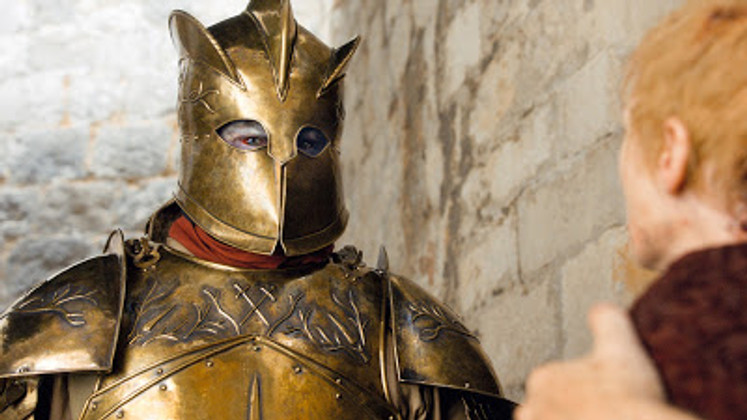Medieval Helms and Helmets: A History and the Importance of a Knight's Headgear
Posted by Sword N Armory on Jul 12th 2020
Take just a moment to imagine the scene; you're a medieval knight caught in an intense and violent scrimmage to protect the stronghold of your king. Several enemy soldiers have made it over the walls brandishing spears, swords, and axes. You make your way toward one of them as the occasional arrow tings from your Armet, making you thankful for your helm. Suddenly, something hits you hard in the head sending you flying to the ground. It's an enemy axe. Momentarily you think you're dead. When the ringing in your ears goes away, however, the dented side of the Armet and a small trickle of blood at your cheek are your only injuries. Ultimately, you're unharmed and still able to defend your kingdom.
Essentially, this was the greatest and most critical need of helms, helmets, and headgear for knights in medieval warfare. Though a proper blow could puncture a helmet, many times arrows fired en masse at a distance simply were not powerful enough to puncture the metal many knight's headgear was constructed of in the late period of the medieval era, and a sword or axe would need a monumental amount of strength to do more than give the wearer a bad headache. The Armet type helm, as mentioned above, is the most renowned type of knight's headgear, the classic full facial covering helmet with lift visor. However, this helmet took years of refining to develop and didn't show up on medieval battlefields until the 14th century.
As warfare progressed in the middle ages so did the technology that allowed knights to survive to do battle longer. This progression led to the ongoing evolution of the helmet over the course of the early, high, and late medieval periods. In the early medieval period open faced 'nasal' helmets, so named for their ability to protect the nose in combat, were popular, but by the high era had been replaced by closed faced helms. Though closed helmets allotted for disadvantageous mobility issues, they were much safer and sturdier than open faced helmets that came before. By the late age closed helmets, like the Armet, had become popular as they offered visors which could be opened or closed to allow the knight to be cooled or get more air flow and protected the full head, as well as the lower face and nape of the neck. Below we'll look at a few different helmet options from the early to the late medieval period and there advantages and disadvantages.
Originally developed by Viking clans, the Spangenhelm saw wide use in Europe by knights and other warriors in the early period of the middle ages. Sporting an open face design, the Spangenhelm allowed for a free range of movement in the wearer, but ultimately little in protection if struck in the face or by applied strength. The most common of the 'nasal' helmets, these helms are often seen with a nose protecting appendage.
A cross between the Spangenhelm and the Armet, Bascinet helmets were crafted in various ways throughout all three eras of medieval history. Originally starting their evolution as simple leather head coverings, Bascinets had evolved by the middle and late periods and would be made from iron or steel. Bascinets with visors were dubbed Great Bascinets and, while sacrificing some stability, were a light alternative to Armets while still providing facial protection.
Armet
As mentioned above, Armets are the headgear most people think of when considering helmets worn by knights. With their origins in Italy in the late medieval period, Armets would become the signature protective headgear of many knights. Not only did Armets provide facial protection, they also covered the lower face and neck for sword and axe swipes and spear thrusts. Unfortunately, what Armets possessed in strength, they lacked in mobility and were heavy, uncomfortable, and unwieldy, even by helmet standards.
In medieval combat, when arrows were flying and every enemy was out for your head, it's easy to see why a knight's headgear was of such prominent importance. Though they may have been heavy and uncomfortable, it was obviously better than receiving an arrow through the skull or a pike through the throat. Now considered a knight's trademarked piece of armor, the medieval helms, helmets, and headgear most certainly had their place alongside the spear, sword, and shield in defending lives and assuring that king and country were upheld.












